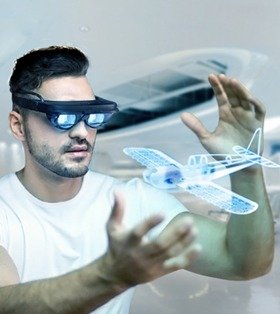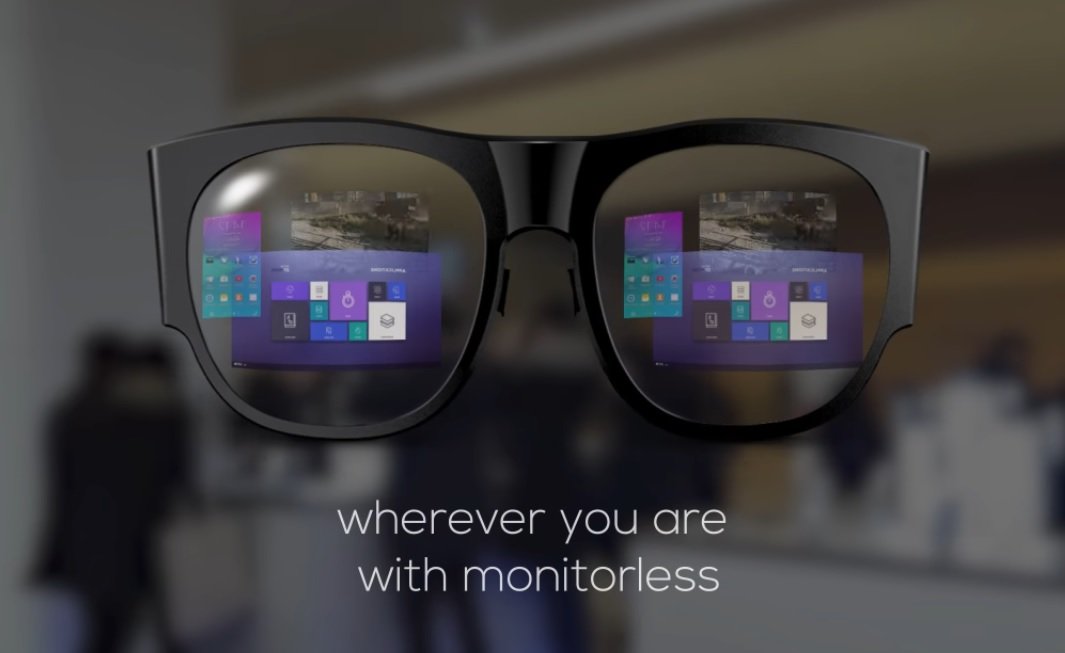
What is AR Augmented Reality?
Augmented Reality, and in short AR, 2020 will be the year of AR, the year when companies like Apple, Google, Meta and other companies introduce the technology to replace the boring old smartphones.
AR’s Place in the World of Extended Reality
We may trace the origins of augmented reality back to 1901 in science fiction. However, it was only in 1990 that Thomas Caudell coined the phrase as a tool to aid Boeing workers in visualizing complex aircraft systems. Louis Rosenberg's complicated Virtual Fixtures AR system for the US Air Force was a huge step forward in 1992. The ARQuake game (2000) and the design tool AR Tool kit were among the first consumer AR releases (2009). The 2010s saw a technical explosion that went beyond AR in the traditional sense—for example, Microsoft's HoloLens in 2015—while AR software got more powerful, popular, and accessible.
So in a nutshell, what is AR? In Hebrew, stratified or integrated reality, these are glasses like sunglasses or eyewear through which we see the "ordinary" world on which additional layers will create a computer (incorporating computer graphics into reality). It is a computing technology used as a replica of reality. Augmented Reality incorporates virtual elements that blend with the proper environment in proper time and interactively. Using sound elements and background illustrations make the reality interactive. In contrast, in contrast to stratified reality, the term virtual reality refers to the complete replacement of the actual world in a virtual world.
We can introduce Ar technology through glasses-like means. We can display the lenses of the glasses data such as local time, location of the compass and more, or even the "anchored" entities of the physical environment, such as figures standing on room furniture. One of the most advanced companies in the world that has the right technology for such applications is Microsoft. Other companies developing mass consumer product development in the consumer world are Samsung, Sony, Google, Facebook, Apple and more.

Layered reality applications work in several methods. In the first method, the user looks at reality through a smartphone or glasses right now; it is actually a projection onto reality by infinite virtual information items so that from the user's perspective - he sees both physical reality and virtual information items, in the same view.
The sky is blue. The grass is green. AR (augmented reality) is the next big thing. It's not around us yet, but it's a mature technology that's about to break the boundaries of reality quickly across many applications. This technology places intangible objects alongside real-world objects, with a combination of a camera, AR sensors or mobile devices, and a specially designed app that makes all this magic come to life in proper time.
So what is AR technology? No, it's not like VR (virtual reality). With AR, you take a shallower dive in the imaginary world and see virtual elements integrated with actual entities, while VR offers visualization of the entire experience.
What is a Layered Reality?
Augmented Reality, and in short AR, 2020 will be the year of AR, the year when companies like Apple, Google, Facebook and other companies introduce the technology to replace the boring old smartphones.
So in a nutshell, what is AR? In Hebrew, stratified or integrated reality, these are glasses like sunglasses or eyewear through which we see the "ordinary" world on which additional layers will create a computer (incorporating computer graphics into reality). It is a computing technology used as a replica of reality. Augmented Reality incorporates virtual elements that blend with the proper environment in actual time and interactively. Using sound elements and background illustrations make the reality interactive. In contrast, in contrast to stratified reality, the term virtual reality refers to the complete replacement of the actual world in a virtual world.
We can introduce Ar technology through glasses-like means. We can display the lenses of the glasses data such as local time, location of the compass and more, or even the "anchored" entities of the physical environment, such as figures standing on room furniture. One of the most advanced companies in the world that has the right technology for such applications is Microsoft. Other companies developing mass consumer product development in the consumer world are Samsung, Sony, Google, Facebook, Apple and more.
Layered reality applications work in several methods. In the first method, the user looks at reality through a smartphone or glasses right now; it is actually a projection onto reality by infinite virtual information items so that from the user's perspective - he sees both physical reality and virtual information items, in the same view.
The sky is blue. The grass is green. AR (augmented reality) is the next big thing. It's not around us yet, but it's a mature technology that's about to break the boundaries of reality quickly across many applications. This technology places intangible objects alongside real-world objects, with a combination of a camera, AR sensors or mobile devices, and a specially designed app that makes all this magic come to life in actual time.
So what is AR technology? No, it's not like VR (virtual reality). With AR, you take a shallower dive in the imaginary world and see virtual elements integrated with actual entities, while VR offers visualization of the entire experience.
Augmented reality works by identifying so-called "markers" or by determining the geographical location of a device, the cursor can be a 2D QR code or any real-world entity that software can identify based on pre-defined characteristics. When a sensor detects and scans such an object, the AR app covers an on-screen digital 3D image on the environment.
The technique geographically based and can build AR experiences regardless of location, making it universal and more common. In addition, you will find GPS and sensors built into the device, such as a gyroscope and accelerometer, accurately determine its location and direction information. The application then generates data that corresponds to that location and embeds it within the scene. The two approaches above are most often combined to offer an advanced AR journey.
Some people might say, "It's fun, but what's the matter?" We use Ar in more cases than entertainment games and provide greater enhancement to vehicles, military, health, education, telecommunications, retail, real estate, tourism, advertising - all there. The list of industries already employing technology continues and continues, but still there is so much room for progress.
What does the future hold? I expect the global AR market to grow to $198 billion by 2025, inexpensive sensors and an unlimited range of potential uses are making the combined reality a virtually ubiquitous technology compared to the more famous VR equivalent.

You should also check out the following articles:
- VR BUYING GUIDE AND THE BEST VR HEADSET FOR 2022
- A meta market opportunity: The metaverse could soon be worth $1 trillion
- Facebook wants to build a metaverse. Microsoft is creating something even more ambitious.
- How to succeed in the virtual reality world of tomorrow?
- Books you must read about virtual reality
- Best New Augmented Reality Books To Read In 2021
- US$ 4.7 Billion- The global augmented reality gaming market
- The smart glasses revolution is about to get real
- Consumer Brands Reinventing Marketing in the Metaverse
- Imagine Making Money in Rec Room
- The biggest AR and VR predictions of 2022
- Apple hired Meta's AR communications lead ahead of the 2022 launch of the headset.
- Who Will Be in Charge of the Metaverse?
- The Kingdom of Abraham: The first Jewish metaverse
- Gen Z are planning to spend thousands on cryptocurrency, NFTs and metaverse
- According to Goldman Sachs, the metaverse must run on blockchain
- What You Can Create With a Small Piece of Land in the Metaverse
- How To Buy Land In The Metaverse?



